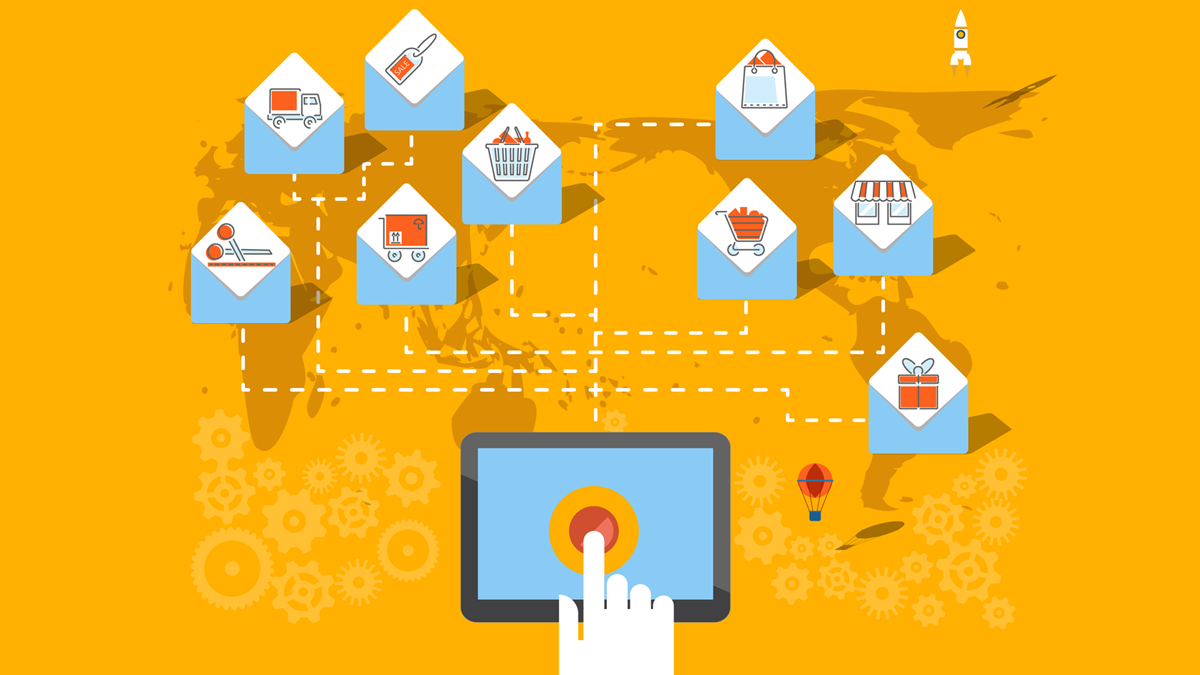Email marketing can be a powerful tool for businesses of all sizes to connect with their audience, build relationships, and drive conversions. However, crafting an effective email marketing campaign is easier said than done. With so many emails flooding people’s inboxes every day, it can be challenging to stand out and capture their attention. That’s why it’s crucial to have a solid strategy in place and follow best practices to ensure your emails are opened, read, and acted upon. In this post, we’ll share some practical email marketing tips to help you optimize your campaigns and achieve your business goals.
Email marketing is a cost-effective way to connect with your audience and build relationships that can last for years. By delivering valuable content, personalized messaging, and targeted offers, you can keep your subscribers engaged and encourage them to take action. Additionally, email marketing allows you to track and measure your results, providing valuable insights into what’s working and what needs improvement.
However, creating successful email campaigns requires more than just hitting “send” on a message. It requires careful planning, strategic thinking, and a willingness to experiment and iterate based on data. Whether you’re a small business owner or a marketing professional, understanding the best email marketing tips for successful email marketing can help you stay ahead of the curve and achieve your goals.
1. Know Your Audience
The first step in any successful email marketing campaign is to know your audience. Understanding your audience’s needs and preferences is crucial to crafting effective messaging that resonates with them. This includes identifying the types of content they’re interested in, what time of day they’re most likely to engage with your emails, and what devices they use to read them.
Many emails are opened on mobile devices, so it’s essential to optimize your campaigns for mobile viewing. Make sure your emails are mobile-responsive, with clear and easy-to-read fonts, images, and links. Additionally, segmenting your email list based on demographics, behavior, and engagement can help you tailor your campaigns to specific audiences and improve overall engagement rates.
2. Craft Attention-Grabbing Subject Lines
The subject line of your email is the first thing recipients will see, and it can make or break whether they open your email. In fact, many email recipients decide whether to open an email based on the subject line alone. Therefore, it’s essential to craft subject lines that are attention-grabbing, informative, and compelling.
Some best practices for creating effective subject lines include keeping them short and sweet, using action-oriented language, and personalizing them with the recipient’s name or location. Additionally, A/B testing different subject lines can help you determine which ones resonate best with your audience and improve open rates over time.
3. Provide Valuable Content
Once you’ve enticed recipients to open your email, it’s essential to provide them with valuable content that keeps them engaged and interested in your brand. This includes creating content that is informative, entertaining, and relevant to their needs and interests.
One way to provide valuable content is by sharing educational blog posts, industry news, or helpful tips and tricks related to your product or service. Additionally, using visual content like images, videos, and infographics can help break up the text and make your emails more engaging.
Also, Read: How To Do Persuasive Writing The AIDA Way?
4. Use Calls-to-Action (CTAs)
Calls-to-action (CTAs) are an essential component of any successful email marketing campaign. They guide recipients towards taking the desired action, whether it’s clicking a link, downloading a resource, or making a purchase.
When creating CTAs, it’s important to use clear, action-oriented language that prompts recipients to take action. Additionally, using contrasting colors, large fonts, and placement in prominent areas can help make them more noticeable and increase click-through rates.
5. Test and Iterate
One of the benefits of email marketing is the ability to track and measure your campaigns’ performance, allowing you to make data-driven decisions to improve future campaigns. Therefore, it’s essential to test and iterate your campaigns regularly to optimize for better results.
A/B testing different elements of your emails, such as subject lines, CTAs, and email design, can help you determine what works best with your audience and improve overall engagement rates. Additionally, analyzing metrics like open rates, click-through rates, and conversion rates can provide insights into what areas need improvement and where to focus your efforts.
6. Follow Best Practices for Deliverability
To ensure your emails land in recipients’ inboxes and not their spam folders, it’s important to follow best practices for deliverability. This includes using a reputable email service provider, authenticating your domain, and ensuring your email content and design are optimized for spam filters.
Some best practices for deliverability include avoiding spam trigger words like “free,” “buy,” and “limited time offer” in your subject lines and email content, using a recognizable sender name and email address, and including an unsubscribe link in every email.
7. Personalize Your Emails
Finally, personalizing your emails can help improve engagement rates and build stronger relationships with your audience. This includes using recipient’s names, segmenting your email list based on interests and behavior, and sending targeted emails based on their interactions with your brand.
Personalized emails have a higher unique open rate and higher click-through rate than non-personalized emails. Additionally, using dynamic content that changes based on the recipient’s location or behavior can help make your emails more relevant and engaging.
Conclusion
Email marketing remains a powerful tool for businesses to connect with their audiences and drive conversions. By knowing your audience, crafting attention-grabbing subject lines, providing valuable content, using calls-to-action, testing and iterating, following best practices for deliverability, and personalizing your emails, you can create campaigns that stand out from the crowd and deliver real results.
Frequently Asked Questions
What is email marketing?
Email marketing is the practice of sending commercial messages, typically to a group of people, using email. It can be used to promote products or services, build brand awareness, and nurture relationships with existing customers.
Why is email marketing important?
Email marketing is important because it allows businesses to reach a large audience in a cost-effective and targeted manner. It’s also a great way to stay in touch with existing customers and build brand loyalty.
How often should I send emails?
The frequency of your email campaigns will depend on your specific goals and audience. However, it’s generally recommended to send emails at least once a month to stay top-of-mind with your subscribers.
How do I build an email list?
You can build an email list by offering incentives for people to sign up, such as a discount or free resource. You can also collect email addresses at events or through social media.
What should I include in my emails?
Your emails should include valuable content that resonates with your audience, such as informative blog posts or exclusive promotions. You should also include calls-to-action to encourage recipients to take a specific action.
How do I measure the success of my email campaigns?
You can measure the success of your email campaigns by tracking metrics such as open rates, click-through rates, and conversion rates. This data can help you identify what’s working and what needs improvement.
How can I make my emails stand out?
To make your emails stand out, you can use attention-grabbing subject lines, visually appealing design, and personalization. You can also experiment with different types of content, such as videos or interactive elements.
How do I avoid my emails going to spam?
To avoid your emails going to spam, you should follow best practices for email deliverability, such as using a reputable email service provider, authenticating your domain, and avoiding spam trigger words in your subject lines and content.
How do I segment my email list?
You can segment your email list by demographics, behavior, and interests. This allows you to tailor your messaging to specific groups and improve engagement rates.
How do I optimize my emails for mobile devices?
To optimize your emails for mobile devices, you should use a mobile-responsive design that adapts to different screen sizes. You should also use clear and easy-to-read fonts, images, and links.
How can I improve my email open rates?
To improve your email open rates, you can experiment with different subject lines, personalize your emails, and segment your email list. You can also optimize the timing of your emails to send them when your audience is most likely to be checking their inbox.
How can I increase my email click-through rates?
To increase your email click-through rates, you can use clear and compelling calls-to-action, optimize the placement and design of your links, and use A/B testing to experiment with different approaches.
What is a good email unsubscribe rate?
The average email unsubscribe rate varies by industry, but generally, only a small percentage is considered good. However, it’s important to monitor your unsubscribe rate over time and take action if it starts to increase.
How can I ensure my emails comply with GDPR regulations?
To ensure your emails comply with GDPR regulations, you should obtain explicit consent from subscribers to receive marketing emails, provide a clear opt-out mechanism, and ensure that you’re collecting and processing data in a lawful and transparent manner.
How can I automate my email campaigns?
You can automate your email campaigns by using an email service provider that offers automation features, such as drip campaigns or triggered emails. This allows you to save time and streamline your email marketing efforts while still providing relevant and timely messaging to your subscribers.




